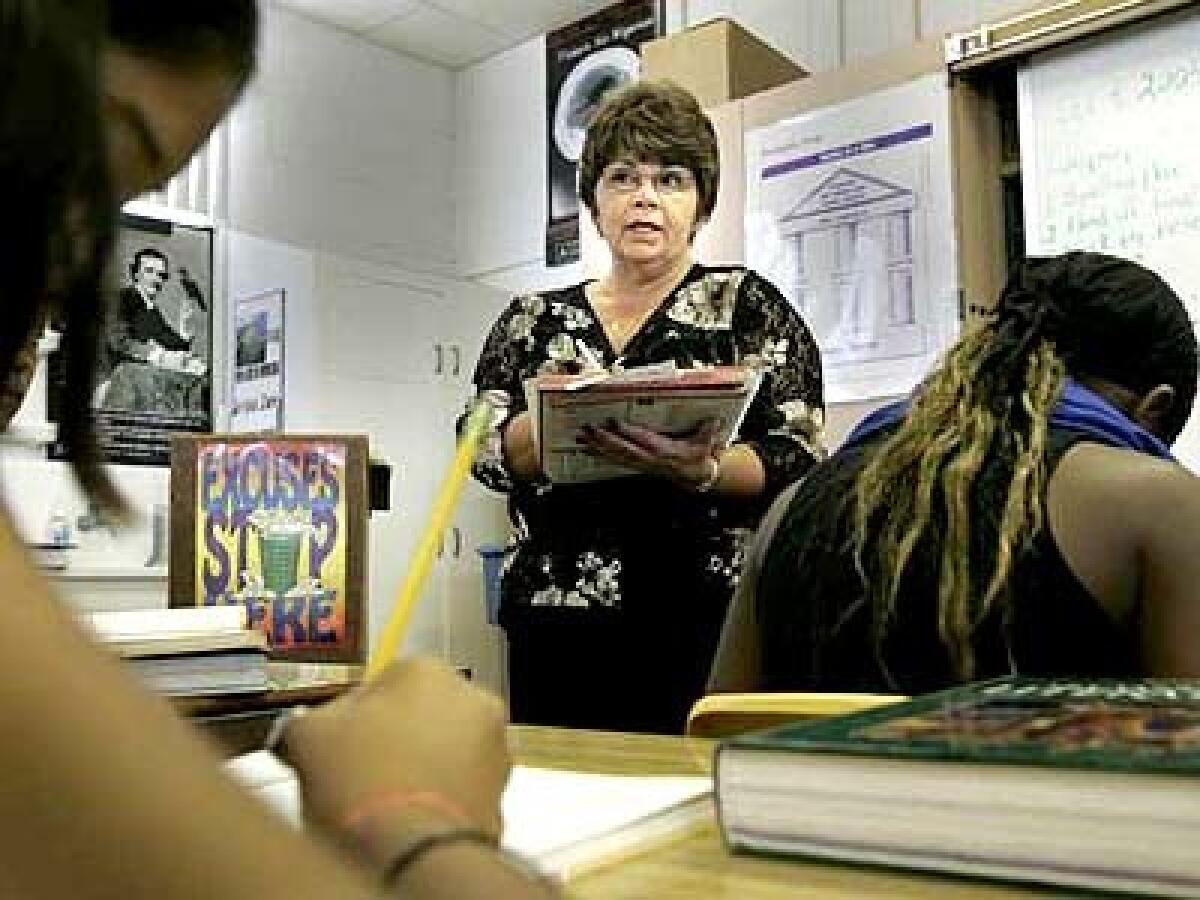Some California Schools on Watch List

- Share via
More than a quarter of the California public schools that receive federal anti-poverty aid fell onto this year’s performance watch list for failing to meet targets of the No Child Left Behind law, the state said today.
The state’s Program Improvement list of schools that have failed to meet the proficiency level grew by more than 50% to 1,626.
Sixty-five schools got off the list by making improvements or increasing the number of students tested. But more than 500 schools were added. An additional 292 schools remained on the list despite meeting the target. Schools must meet the target two consecutive years to exit.
After three years on the list, schools face escalating sanctions.
This year, 174 schools landed on the list for the third year. The law requires their districts to take corrective actions that could include replacing staff or extending the school year. Tougher actions, such as reopening the school as a charter or bringing in an outside manager, apply to 268 schools now in their fourth and 10 in their fifth year.
The Times reported today that more than 1,200 schools, based on their past scores, were on a course to fall below the rising target next year and more than 3,500 by 2008, the year the federal legislation is due to be reauthorized. The data released by the state today shows that more than a third of that number failed to meet this year’s lower target.
State Supt. of Instruction Jack O’Connell used the release of the new watch list to criticize the federal program which state officials believe has doomed thousands of schools to the status of failure, despite continuing improvements.
“I continue to believe that California’s own accountability system — the Academic Performance Index — is a fairer and more accurate measurement of school performance,” O’Connell said.
President Bush has promoted the law as a signature domestic priority — one that challenges the “soft bigotry of low expectations.”
But many teachers and administrators say the law puts too much emphasis on test scores. They, along with Democratic presidential candidate Sen. John F. Kerry, say the Bush administration has not given schools enough money to get the job done, an accusation federal officials deny.
No Child Left Behind amended the existing federal education law that also required schools to meet annual targets. The law applies to about 5,700 schools that receive federal aid.
The new measure sought to improve schools by requiring annual English and math tests, but left it up to the states to determine the annual improvement targets. Schools receiving federal funding for serving poor children would face sanctions if they did not improve.
California, which had adopted some of the toughest proficiency standards before No Child Left Behind was enacted, resisted pressure to lower those rules, as some states did. But it tried to cushion campuses from the new testing pressures.
The state required schools to show the least amount of improvement under the law in the first six years to avoid thousands of campuses failing. State officials created that system hoping that Congress would revise the law when No Child Left Behind was reauthorized in 2008.
Under the state’s system, elementary and middle schools had to show only that 13.6% of students were proficient in English and 16% in math over the program’s first three years. The goals rise this school year to 24.4% in English and 26.5% in math, and stay there three years.
All schools in Program Improvement must offer transportation for students who choose to attend another school in the district.
More to Read
Sign up for Essential California
The most important California stories and recommendations in your inbox every morning.
You may occasionally receive promotional content from the Los Angeles Times.











